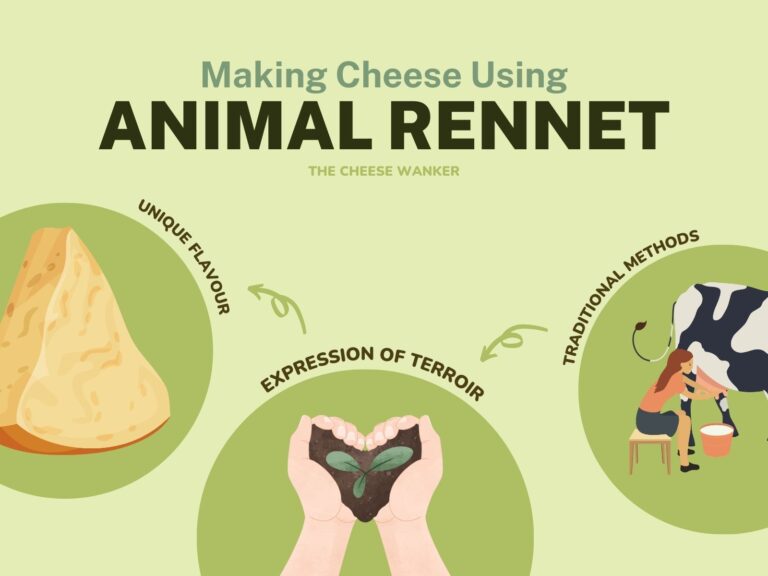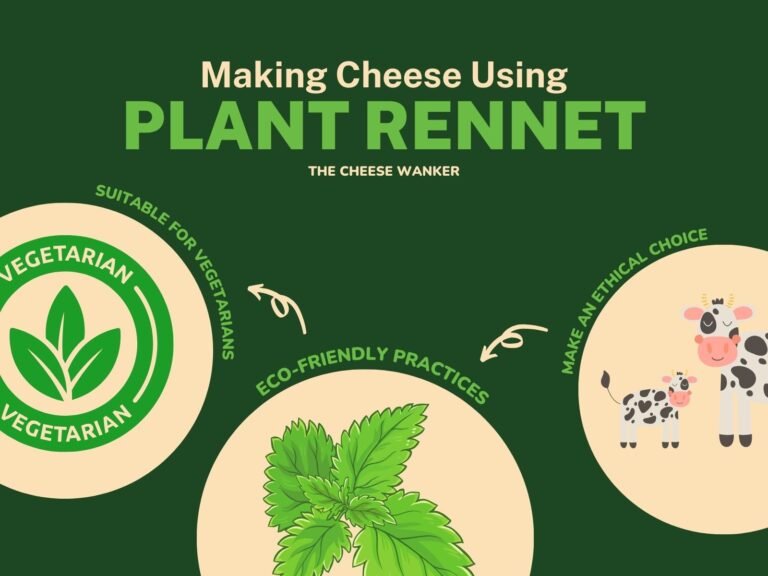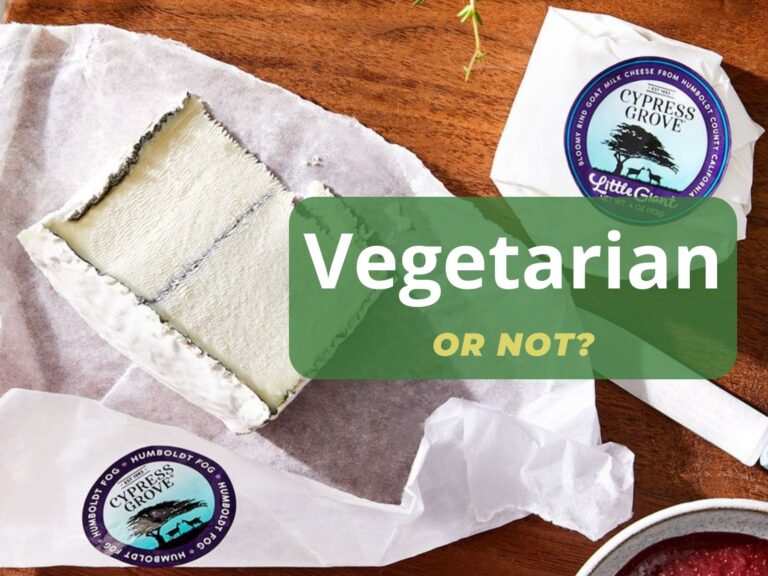Yes, vegetarians can eat cheese. But not all cheeses are vegetarian-friendly. Keep on reading to find out why only some cheeses are suitable for vegetarians. And discover our best vegetarian cheeses.
SEE ALSO: What are the different types of rennet used in cheesemaking? →
Why are only some cheeses vegetarian-friendly?
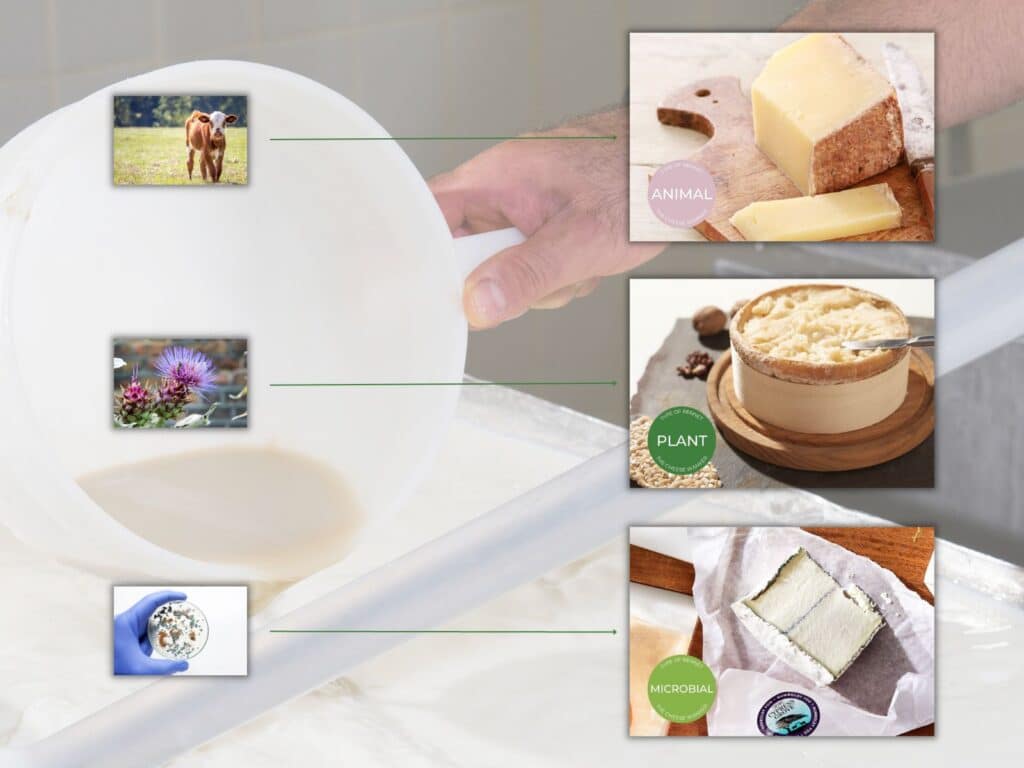
Traditionally, it takes four ingredients to make cheese: milk, culture, salt and rennet. Milk, culture and salt are very clearly vegetarian-friendly (but not necessarily vegan-friendly). So, let’s talk about rennet.
Rennet is an enzyme that is used to coagulate milk. What does this mean? It turns milk into curds that then develop into the texture that we commonly associate with cheese. Traditionally, rennet has come from animal sources. However, more and more cheeses are now made with plant-based or microbial rennet. Some examples of plant rennet include Cardoon Thistle, Nettle and Fig.
As you’ve undoubtedly guessed, all cheeses made with plant-based rennet are vegetarian-friendly. As for microbial rennet, things are a little bit more complicated.
Types of microbial rennet
There are basically two different types of microbial rennet that are used in cheesemaking. Namely, natural microbial rennet and genetically-modified microbial rennet. You can read more about them in our complete guide to microbial rennet here.
As you will see, the vegetarian community is divided on whether cheeses made using GMO rennet are vegetarian-friendly or not. So, for the purpose of our list, we are going to focus on cheeses made with plant-based rennet. And even some that are made without using any rennet!
Best vegetarian-friendly cheeses
1 Torta del Casar
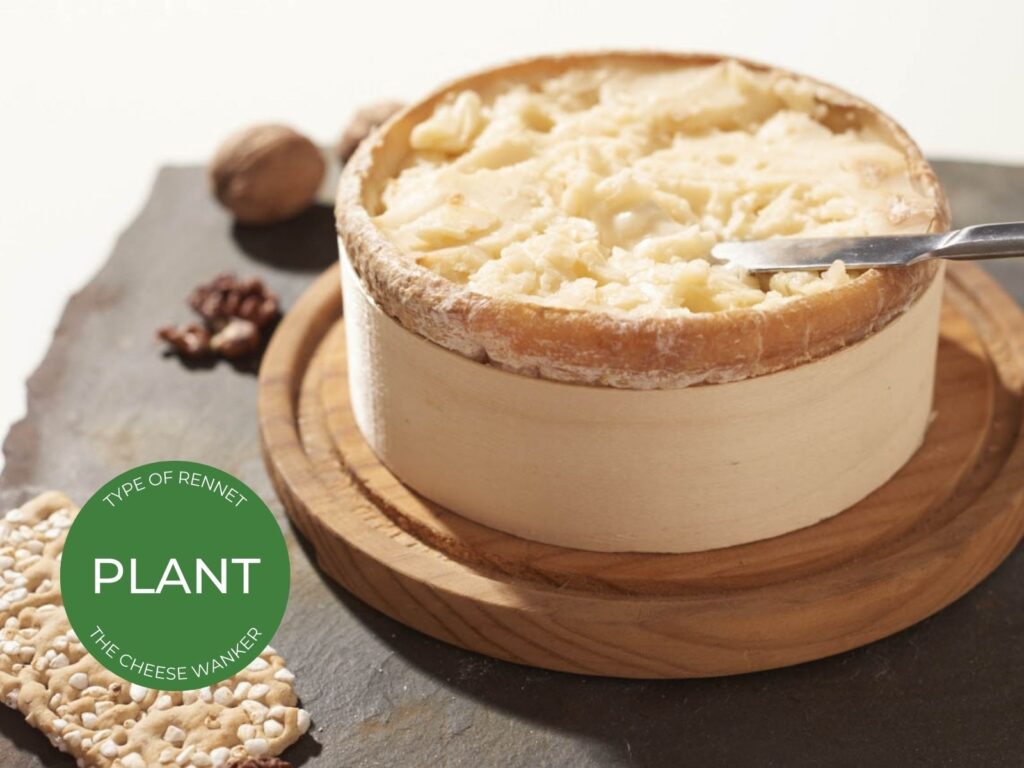
Without a doubt, Torta del Casar is one of Spain’s most popular soft cheeses. Since it is made using Cardoon Thistle, Torta del Casar is a vegetarian friendly-cheese. With a light and thin semi-hard rind, the cheese’s main feature is its decadently creamy texture.
At optimal ripeness, the insides of Torta del Casar have been known to pour out from any crack in the rind. The more refined palates among you might detect the slightest touch of bitterness that is imparted by the Cardoon Thistle.
The best way to enjoy this decadent cheese is to bring it to room temperature, and use a sharp knife to open the top of the rind. Then, you can spread the oozy insides on fresh or lightly toasted bread.
2 Cashel Blue
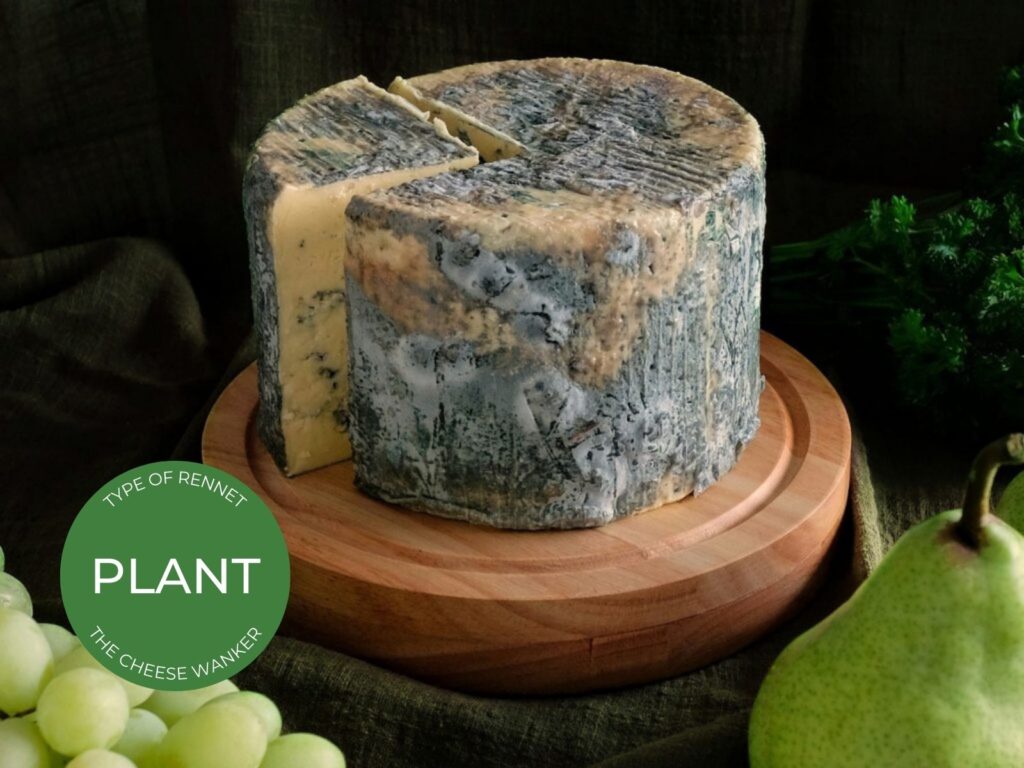
Our second cheese on the list is Ireland’s Cashel Blue. Cashel Blue is a cow’s milk blue cheese made by Cashel Farmhouse Cheesemakers in County Tipperary, Ireland. Made with pasteurised cow’s milk and thistle rennet, the wheels of cheese are then matured for up to six months.
At two months, Cashel Blue is firm and creamy near the edge with a subtle tanginess. However, it truly comes into its own at three months when its texture breaks down and its flavour is richer and fuller with a touch of spice. Its paste is buttery yellow and the blue mould appears as marbling throughout and also on the rind.
Enjoy this stellar Irish blue with green grapes and pears. And you can wash it all down with a fresh IPA or a glass of Chimay.
3 Azeitão
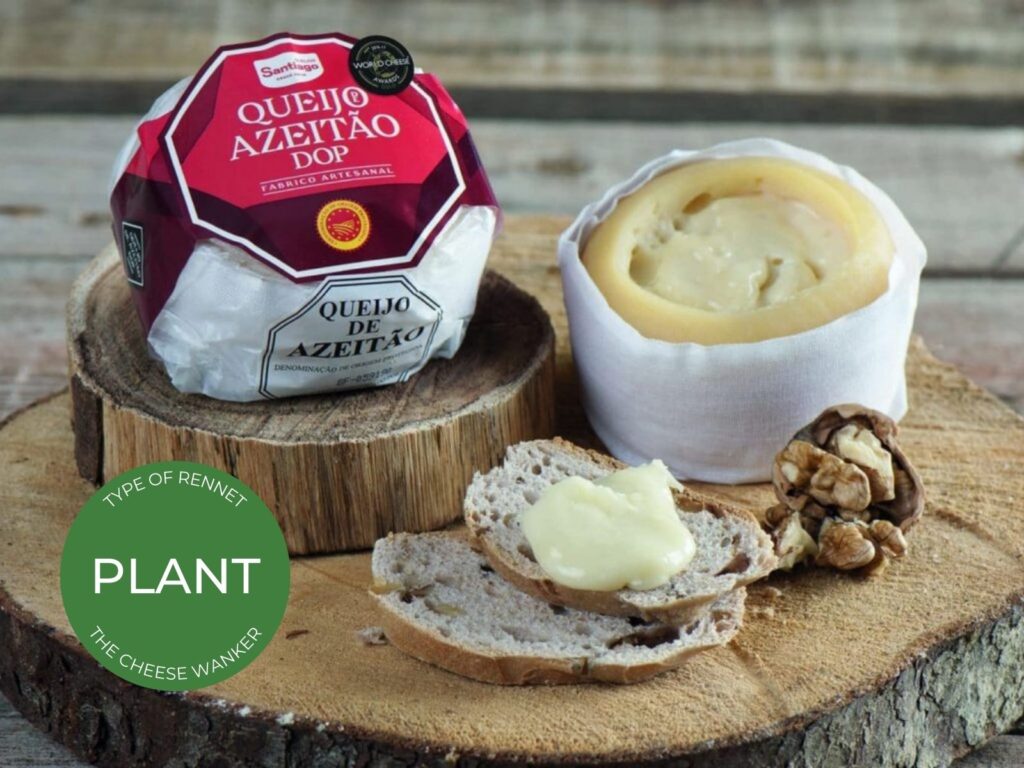
Next, we have another soft sheep’s milk cheese. Indeed, Azeitão is a soft raw milk cheese that is made by select farmhouse dairies in the Arrábida Mountains of southern Portugal. Local cheesemakers coagulate the milk using a vegetable rennet that is derived from the stamens of the Cardoon Thistle flower.
Azeitão’s texture is smooth and velvety when ripe, becoming harder and drier as the cheese ages. The interior paste is ivory-white and oozes at room temperature. Because of the Cardoon Thistle rennet, Azeitão tends to develop a slightly sour taste with a touch of bitterness. Overall, this balances well the sweetness of the sheep’s milk and the herbaceous and vegetal notes in the cheese.
Due to Azeitão’s robust flavour and aroma, it is best paired with more moderate flavours. Sweet white wines from the same region or medium-bodied red wines with low tannin levels will work wonders.
4 Sinodun Hill
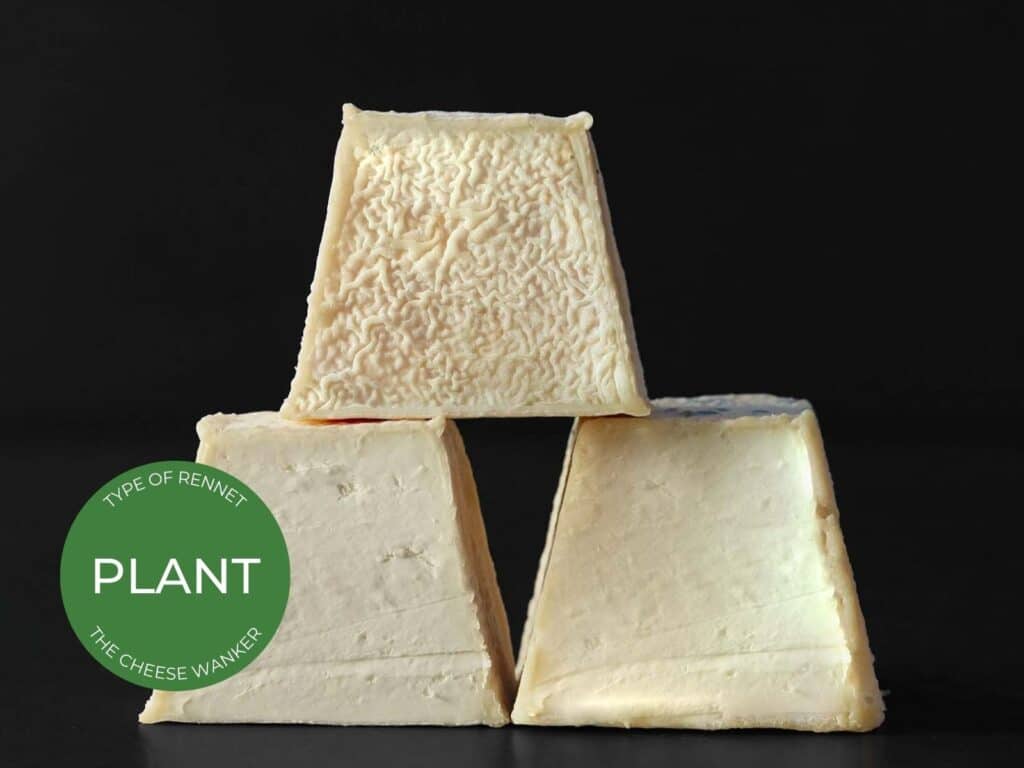
The first goat milk cheese on our list is the UK’s Sinodun Hill. This gorgeous pyramid-shaped soft white mould cheese hails from Oxfordshire, England. Unsurprisingly, it gets its named from Sinodun Hill, a hill near the farm that is said to be one of the most important sites for fortifications in the UK.
At their Earth Trust Farm, Norton & Yarrow hand-make Sinodun Hill using fresh milk, thistle rennet and a small amount of culture. Then, a master affineur gently matures each little pyramid for up to 21 days. At that age, the cheese develops a thin wrinkly rind with the occasional dusting of blue. As for the flavour, you can expect an explosion of citrus, almond and red fruit.
Without a doubt, Sinodun Hill is complex enough to be served as a table cheese. Moreover, its aroma and flavour will pair beautifully with a range of ciders and medium-bodied red wines.
5 Serra da Estrela
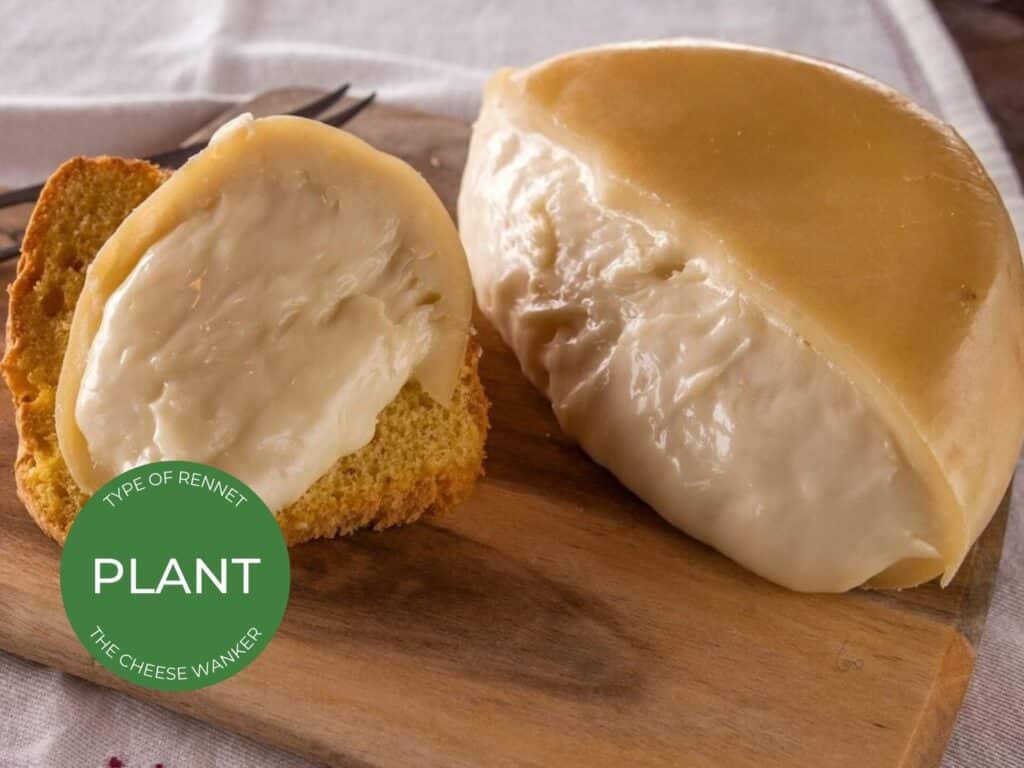
At number 5, we have another Portuguese cheese. Serra da Estrela cheese is a traditional cheese made from sheep’s milk (yes, another one!). The cheese gets its name from the Serra da Estrela mountain range in central Portugal, where it has been made for centuries.
To this day, local artisans make Serra da Estrela using traditional methods, fresh sheep milk and thistle rennet. Afterwards, they age each little cheese for a minimum of 60 days, brushing and turning regularly. At this point, the cheese develops a yellow semi-firm rind wrapped around an oozy paste.
Without a doubt, Serra da Estrela cheese is known for its strong, nutty flavour and dense, creamy paste. The best way to enjoy this vegetarian cheese is to cut off the top of the rind and dip in with a spoon. If you’re feeling a little bit more sophisticated, you can spread it on a crunchy baguette.
6 Cottage Cheese
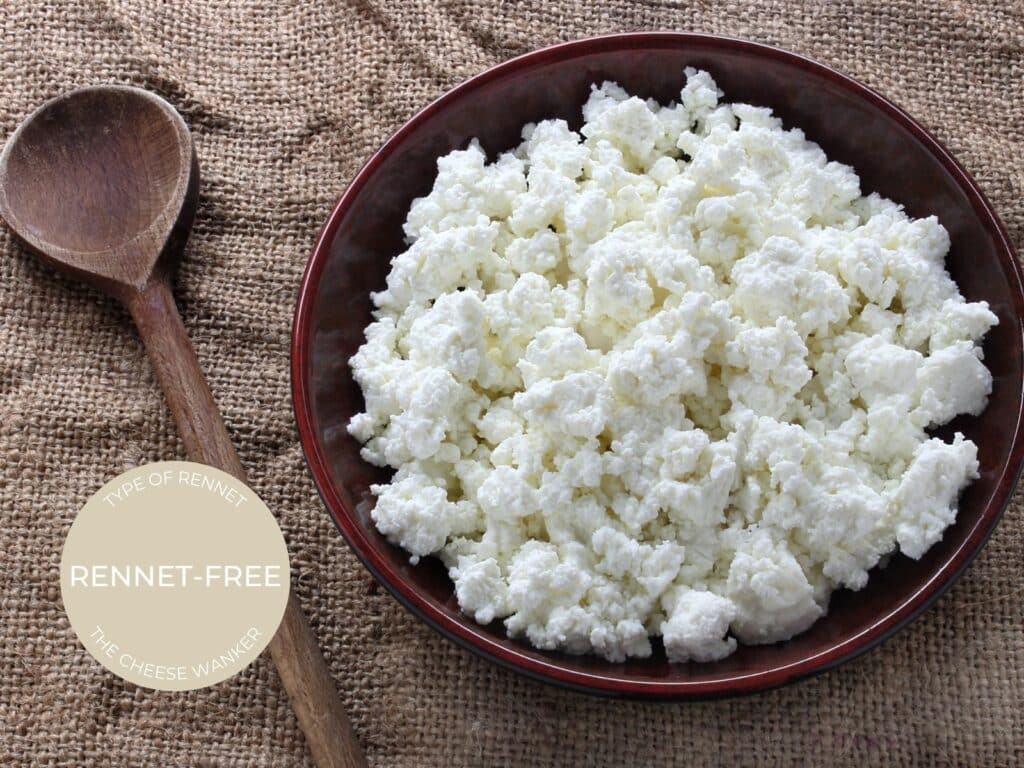
Cottage cheese is a type of fresh cheese made from the curds of cow’s milk. It is known for its creamy and lumpy texture, as well as its mild, slightly tangy flavour.
You can make Cottage cheese by heating milk, adding an acid such as vinegar or lemon juice to curdle the milk, and then draining the curds. Afterwards, you rinse the remaining curds, drain again, and combine with a small amount of cream to create the desired texture.
This rennet-free cheese is a versatile ingredient that can be eaten as a snack, used in recipes, or added to smoothies. Moreover, it is also a popular choice for people following a healthy diet, as it is low in fat and high in protein.
7 Ricotta
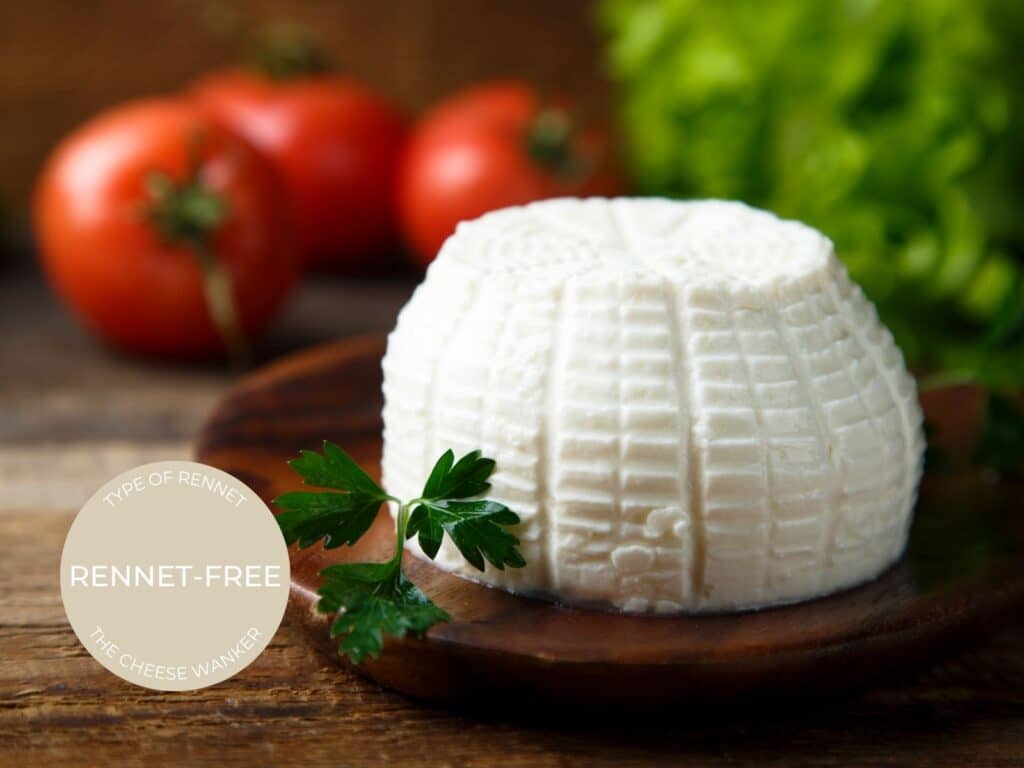
Ricotta is a fluffy white whey cheese that originates from Italy. Traditionally, it is made from the whey that is left over from making other cheeses. It gets its name from the Italian word for “recooked”.
The first step in making Ricotta is to separate the whey from the curds in your milk. Indeed, this is the “first cooking” and you to this by heating the milk. This will form the curds which can be drained to make other types of cheese. Once you have the whey, you warm it up again (“second cooking”) and add an acid such as vinegar or lemon juice to coagulate the whey. This time around, the curds that form are your Ricotta.
So, just like Cottage Cheese above, Ricotta is rennet-free and suitable for all vegetarians. A quality Ricotta will be creamy white in appearance and has a slightly sweet flavour. It is a great addition to many recipes such as pizza and lasagne. Having said that, a high quality Ricotta can be enjoyed as is on a cheese board or spread on bread.
8 Rogue River Blue
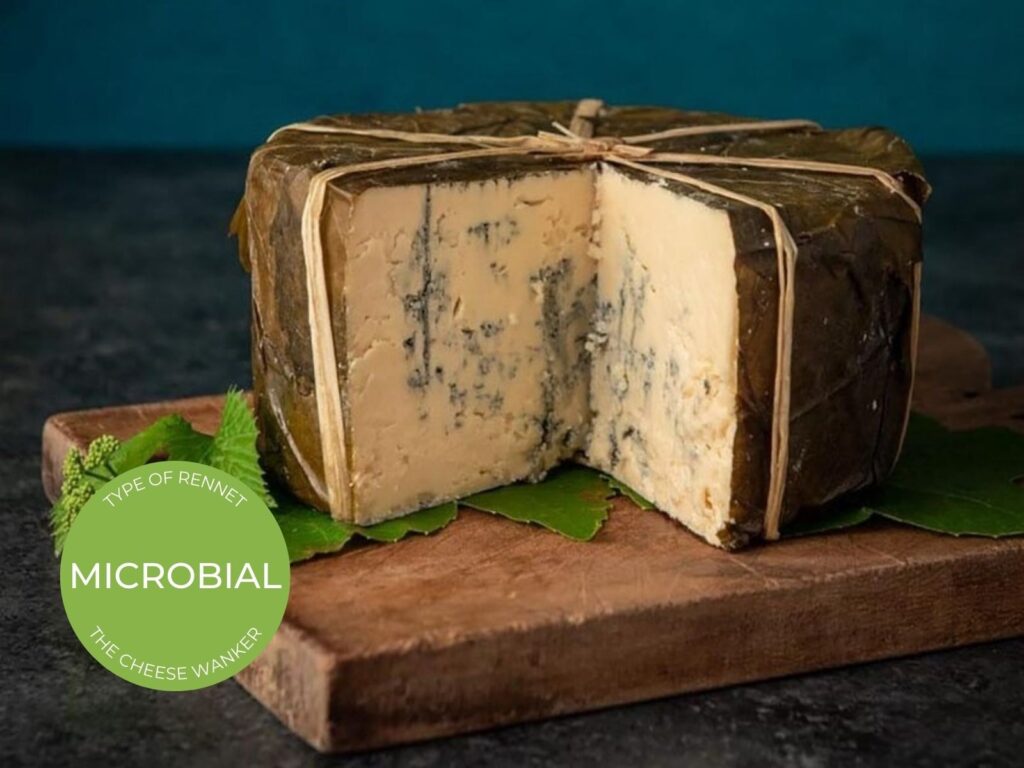
In October 2019, Rogue River Blue became the first American cheese to be named World Champion Cheese at the World Cheese Awards in Italy. This unique blue cheese is seasonally made by Rogue Creamery in Oregon using only their finest milk. Moreover, Rogue River Blue (and all of Rogue Creamery’s other cheeses) is rBST (Recombinant somatotropin), rBGH (Recombinant bovine growth hormone), antibiotic free and gluten free.
Once the curd has been set using microbial rennet, the cheesemaker covers each wheel of cheese in spring-harvested Syrah grape leaves soaked in pear liqueur. Afterwards, an affineur looks after each individual wheel for up to 11 months.
At that age, Rogue River Blue’s texture becomes fudgy and rich and its aroma is reminiscent of pear eau-de-vie. Be prepared for an explosion of flavour ranging from pear brandy to truffle with notes of toffee, blackberry, vanilla, hazelnut, chocolate and bacon.
Whilst this cheese is good enough to eat on its own, you can also enjoy it with a range of beverages. Serve with a dark Belgian Ale or a glass of Scotch Whisky. This blue will also pair beautifully with a Viognier, Gewürztraminer or Sauternes.
9 Brabander Goat Gouda
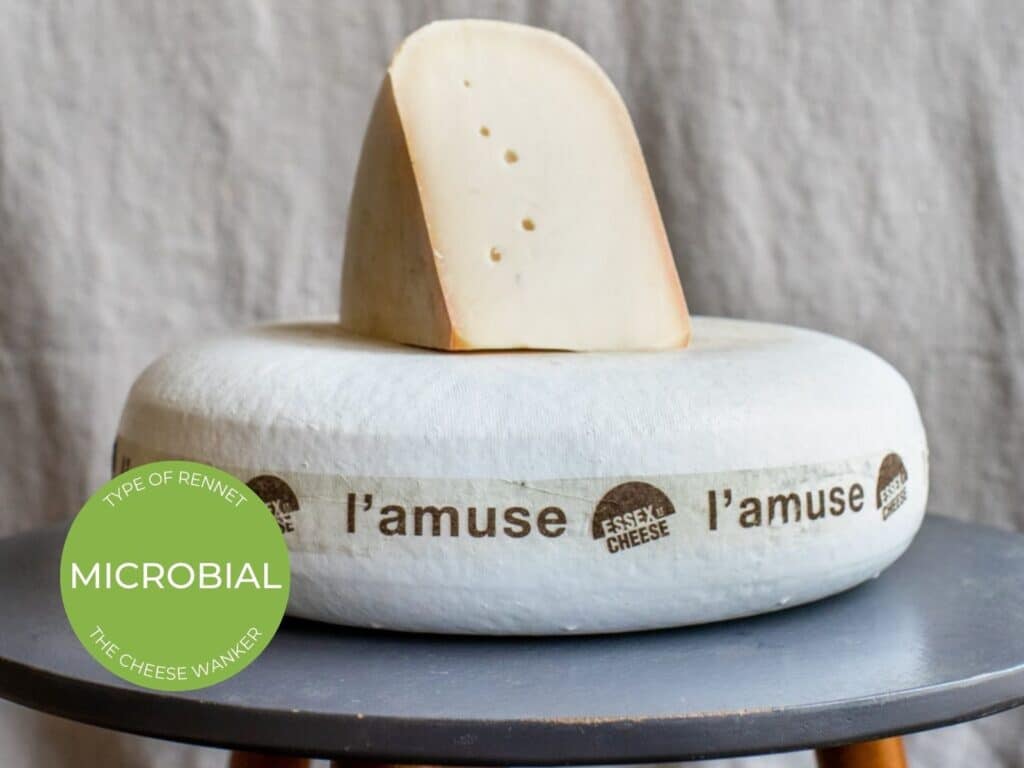
Brabander is a goat’s milk Gouda that originates from Brabant in South Holland. Local cheesemakers use pasteurised milk from Saanen goats and microbial rennet to make this delicious cheese. Afterwards, Fromagerie L’Amuse’s Betty Koster selects the best wheels of Brabander from the producer to mature at their cheese cellar in Amsterdam.
After nine months of maturation, it develops a dense paste with delectable crunchy crystals. And its flavour has only the subtlest of goat quality. Instead, it demonstrates a caramel-like sweetness with a creamy, butterscotch finish.
Unsurprisingly, Brabander is fun and easy to pair. It’s delicious alongside a cherry Lambic beer. Keeping to the cherry theme, you can serve this incredible goat Gouda on a platter with cherry paste, cherry mustard or even fresh cherries. Finally, wash it all down with a smooth red wine with cherry notes such as Barbera or Tempranillo.
10 Humboldt Fog
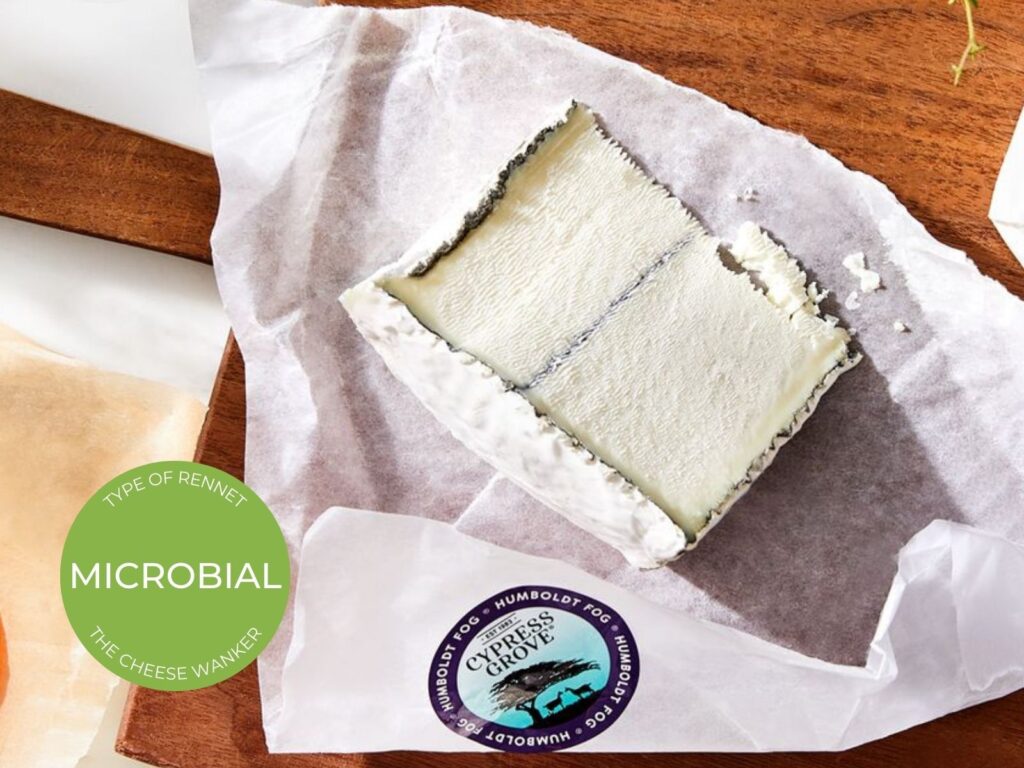
Next, we have the Original American Original®, Humboldt Fog. This soft white mould goat cheese originates from Humboldt County, California. And it gets its name from the morning fog that frequently rolls in from the Pacific Ocean to the Humboldt County coast. Cypress Grove make their signature cheese using the finest local goat milk and microbial rennet.
Over the last decade, its popularity has grown and it is widely regarded as one of the finest examples of American artisanal cheesemaking. Without a doubt, Humboldt Fog is instantly recognisable thanks to its delicate white mould rind, pristine white paste and distinctive layer of ash running through its centre. And it also nails all the flavour notes with a touch of cream and tang!
Humboldt Fog is often served as a table cheese or used in a variety of dishes, including salads, sandwiches, and appetizers. It is also commonly paired with a glass of sparkling wine such as Champagne or Prosecco. But you can also pair it with a light Pinot Noir, a Californian Pilsner or a crisp Cider.
11 Shropshire Blue
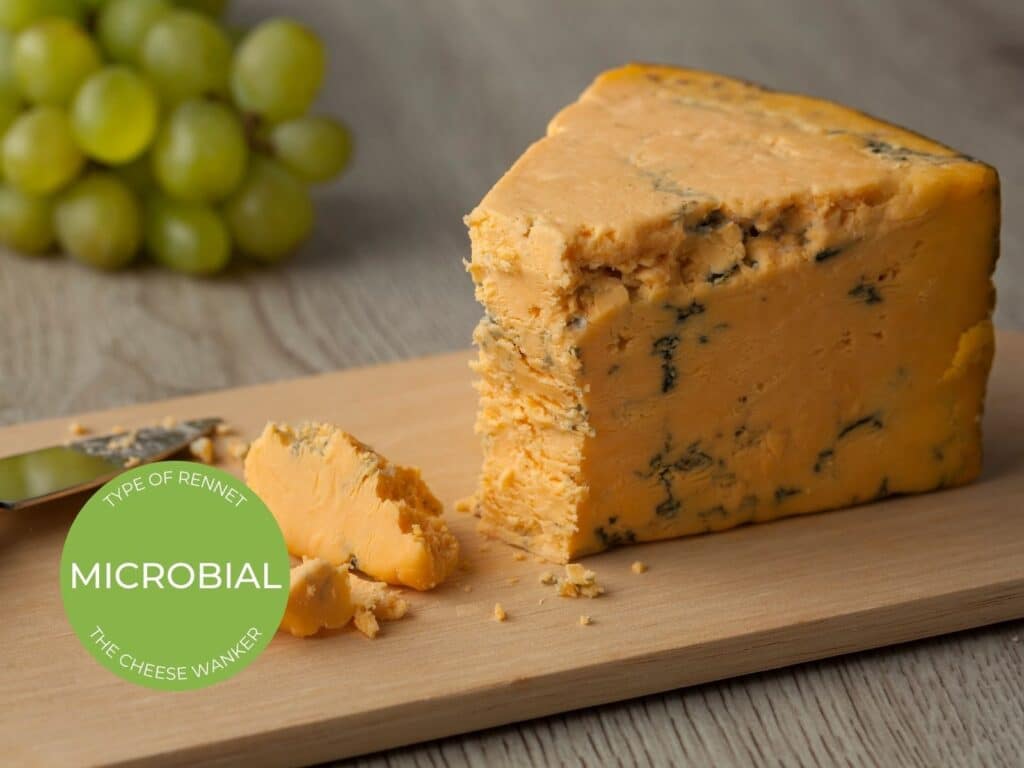
The third blue cheese on our list is Shropshire Blue. This relatively young British blue cheese finds its origins in Inverness, Scotland, in the 1970’s. Andy Williamson, its inventor, initially named it Inverness-shire Blue.
However, he soon realised that the name was a mouthful and that it was affecting the popularity of his cheese. Hence, he changed the name to Shropshire Blue even through the cheese has no relation to the county of Shropshire.
Presently, local cheesemakers in Nottinghamshire use pasteurised cow’s milk and microbial rennet to make truckles of Shropshire Blue. At 6-8 weeks, the cheese develops a rust-coloured natural rind and a bright orange paste. It has a smooth, semi-soft texture and is delicately sweet on the palate.
Our recommendation is to serve Shropshire Blue at room temperature with honey and walnuts. It also pairs well with an English Brown Ale or a fortified wine like Port.
12 Avonlea Clothbound Cheddar
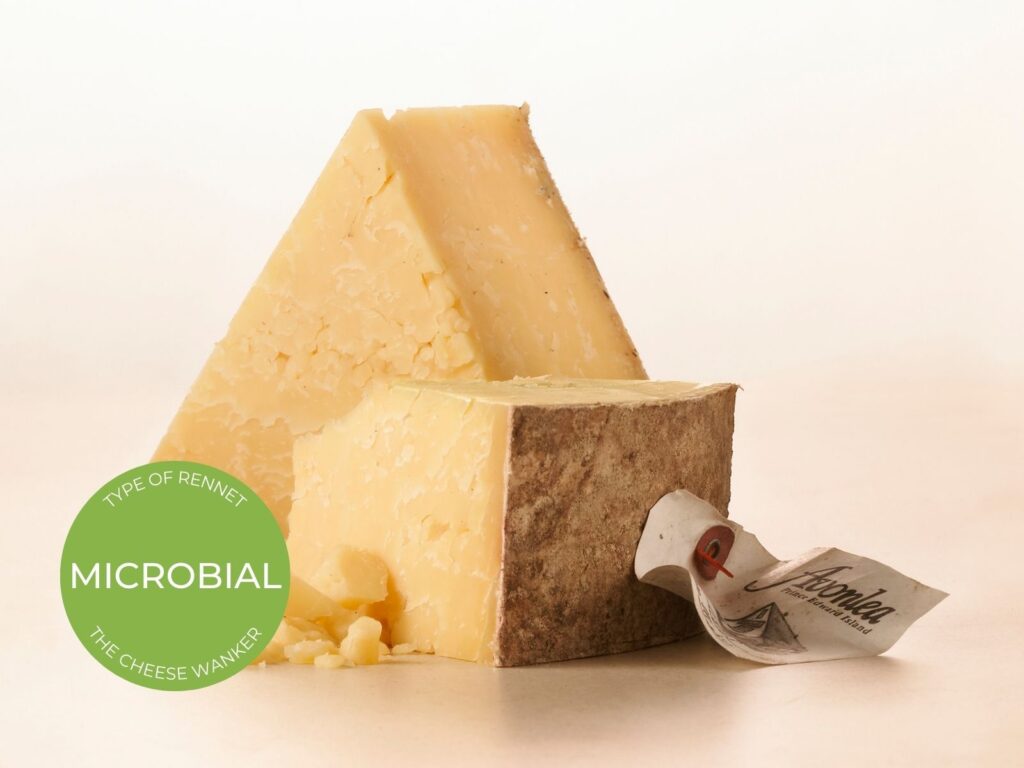
COWS Creamery is located in Charlottetown on Canada’s Prince Edward Island. Creamery owner, Scott Linkletter was inspired to make a Cheddar-style cheese after a visit to the Orkney Islands, north of Scotland. Produced using a Cheddar recipe that Linkletter discovered on that trip and microbial rennet, Avonlea expresses the salt air and iron-rich soils of Prince Edward Island.
With its caramel rind and firm paste, this fudgy Cheddar exhibits a texture that’s amazingly smooth for a clothbound. Moreover, its aromas are mild and minerally with notes of butterscotch and caramel sauce.
Not the least bit bitter, Avonlea’s flavour is sweet and well-rounded with background aromas of tomato and peanut butter. Finally, it leaves an aftertaste that is sweet and milky with notes of brown butter and a tangy bite.
Actually, the warmer this cheese gets, the more savoury it becomes. Hence, you will want to serve Avonlea at room temperature alongside a Pinot Noir or Gewürztraminer, or grate it into a grilled cheese sandwich.
13 Wyfe of Bath
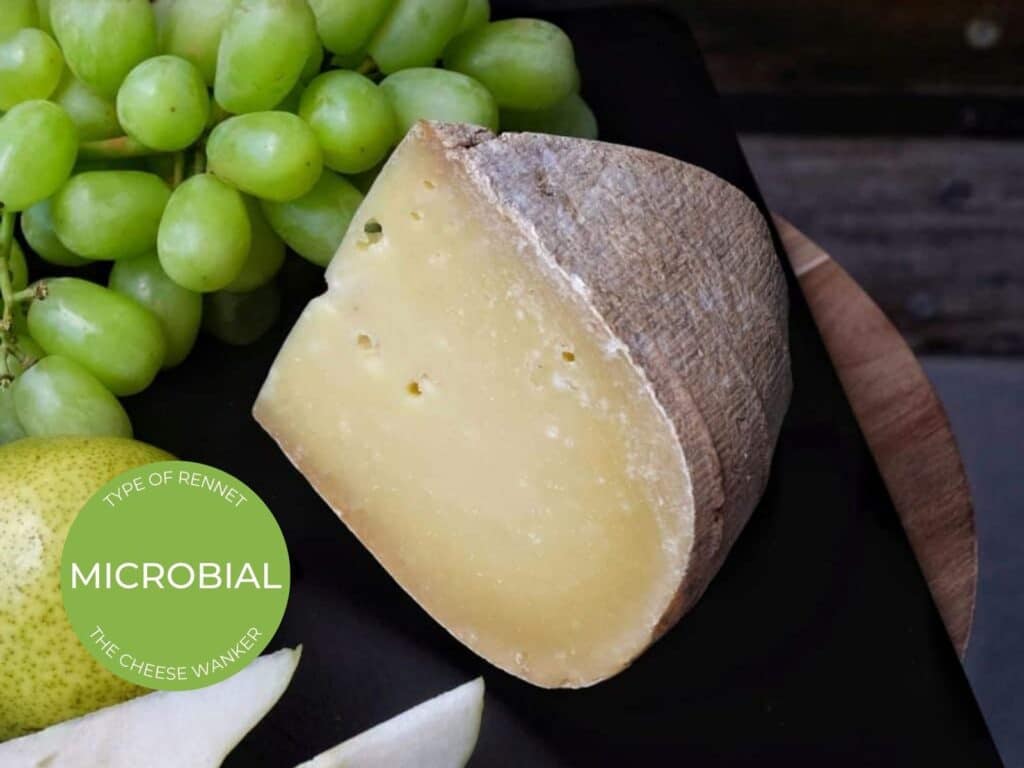
We might just have kept the best cheese for last today. Wyfe of Bath is a playful pressed cheese made by Bath Soft Cheese in Somerset, England. Chaucer’s Canterbury Tales provided the inspiration for the name of this cheese. One of the novel’s characters, the Wife of Bath, was similarly deviant.
Using a recipe loosely inspired by Gouda, the cheesemaker adds microbial rennet to pasteurised cow’s milk. Afterwards, they place the resulting curds in cloth-lined baskets. Indeed, this method gives the semi-hard cheese its unique shape and textured rind.
At 10 weeks, Wyfe of Bath has a slightly elastic texture with tiny eyes and smells of meadows and buttercups. On the palate, the Wyfe of Bath is savoury, creamy and nutty. You can pair this beautiful cheese with grapes or pear and wash it all down with a glass of Merlot or Minervois.
So many options for vegetarians
We hope that you enjoyed reading our list of the best vegetarian cheeses. As you can see, there are no French or Italian cheeses on the list. Unfortunately for vegetarians, most of the best cheeses from those two countries are still made to this day using traditional methods, and animal rennet.
Did we miss any of your favourites? Drop us a comment below and we can let you know whether your favourite cheese is vegetarian or not.
